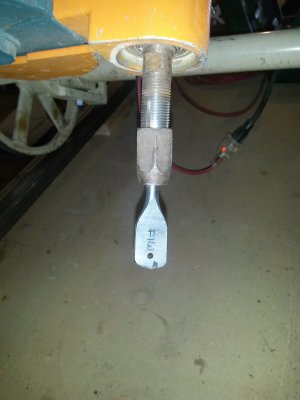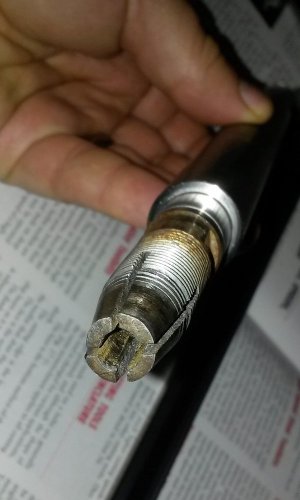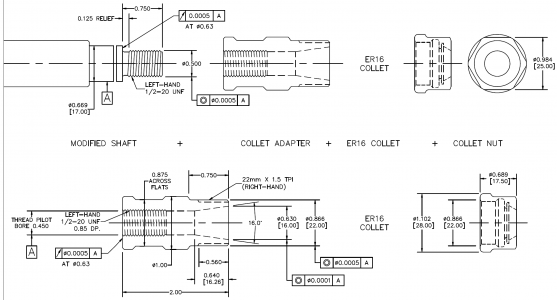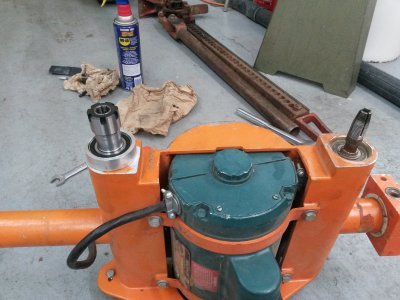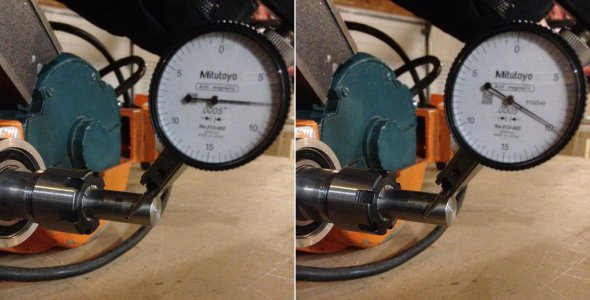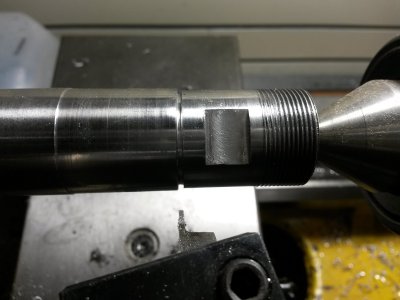- Joined
- Aug 23, 2020
- Messages
- 55
It's the strangest thing. Think "Hand-held NC"
A friend of mine gave me the parts of the machine last year. He didn't know what to do with them, and there certainly were some confusing parts until I started to put it together. Once I had it figured out, I started to find ways to make it work better. Here's where I'm at right now:
Duplicating a 2-D shape in aluminum:
Duplicating a 3-D shape in wood:
The biggest puzzle was figuring out how to set up the wheels on the track, and keep them moving freely, while preventing any twist that would allow one wheel to turn faster than the other. These wheels just travel freely, so it turned out to be as simple as locking the axle to the wheels. Strangely, that WASN'T how it was originally assembled, but maybe some strange stuff happened before it came to my hands.
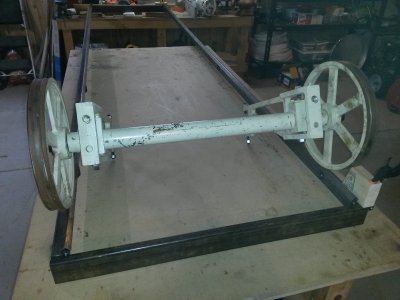
Here's what it's supposed to look like from the manufacturer (the product is discontinued). http://www.terrco.com/woodcarvers/kstar.php
Gun stocks and duck decoys are just the beginning!!
The original came with a 4' long bed. I've built a bed that's 12 feet long instead. It's on a table and soon I'll be setting up the table for work-holding.
A friend of mine gave me the parts of the machine last year. He didn't know what to do with them, and there certainly were some confusing parts until I started to put it together. Once I had it figured out, I started to find ways to make it work better. Here's where I'm at right now:
Duplicating a 2-D shape in aluminum:
Duplicating a 3-D shape in wood:
The biggest puzzle was figuring out how to set up the wheels on the track, and keep them moving freely, while preventing any twist that would allow one wheel to turn faster than the other. These wheels just travel freely, so it turned out to be as simple as locking the axle to the wheels. Strangely, that WASN'T how it was originally assembled, but maybe some strange stuff happened before it came to my hands.

Here's what it's supposed to look like from the manufacturer (the product is discontinued). http://www.terrco.com/woodcarvers/kstar.php
Gun stocks and duck decoys are just the beginning!!
The original came with a 4' long bed. I've built a bed that's 12 feet long instead. It's on a table and soon I'll be setting up the table for work-holding.


